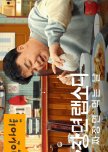
Jjajangmyeon Rhapsody
4 oamenii au considerat această recenzie utilă
Grab a snack because this show will make you hungry!
Chinese Korean Food might have been a more accurate title than Jjajangmyeon Rhapsody. The two-episode food show with Baek Jong Won not only talked about the spicy black bean noodle dish but also other foods brought over with Chinese immigrants and adapted to Korean tastes.The first episode focused on Jjajangmyeon-how it evolved and became one of the most popular dishes in Korea. A celebratory dish at first, it’s now delivered to pool halls, offices, farm fields, and even boats. Six million bowls of the gooey black delight are sold in Korea every day. If the noodles were lined up end to end they would circle the globe 1 ½ times daily. Originally, a cheap food Chinese laborers cooked it slowly turned into the dish it is today. Chinese “places” as they were called in the 1960’s after a law was passed preventing the Chinese from buying real estate and businesses were quite popular and about the only foreign food available. When the economy accelerated in the 1980’s, Chinese restaurants took advantage of delivery service to expand their clientele.
Baek and other guests showed tips on how to enhance the eating experience. The main rule was to not be embarrassed about your face getting messy from the dark sauce. Different varieties and techniques were explored as well as how to spot an authentic Chinese restaurant. Brief historical moments that influenced where the Chinese settled were also thrown in.
Episode 2 covered Jjamppong. Apparently, one of the great dilemmas in a Chinese restaurant is whether to order Jjajangmyeon or Jjamppong. The evolution of Jjamppong from a mild dish to the torridly hot, “adult” dish was explored. Jjajangmyeon has relatively fewer variations whereas Jjamppong has endless varieties. Foodies take Jjamppong food tours, and new takes on the popular dish and hangover cure are created all the time. Two men have tried 500 Jjamppong places in eight years!
Episode 2 also covered Yaki Udon, Mandu (Korean dumplings), Tangsuyuk (Sweet and sour) and fried rice. Some Chinese immigrants came voluntary, others were voluntold by the Japanese when they occupied the peninsula and needed more laborers at the ports to load up the Korean rice on ships bound for Japan and its army. After the Korean war, Americans shipped large amounts of wheat to Korea which they put to good use in making tasty noodles.
I wish they’d given more credit to the hard-working Chinese immigrants who faced discrimination personally and legally and found a way to succeed. Just as they did in the United States, the Chinese often began restaurants and adapted their food for their new home. The documentary made it seem as if the Koreans’ tastes caused the dishes to be delicious instead of the originators of the food working to make them more palatable for their customers.
I enjoyed watching how different chefs created variations of Jjajangmyeon and Jjamppong, pouring their love and creativity into the popular noodle meals. Jjajangmyeon is a dish that brings happiness as well as satiation and that joy was infectious. If you enjoy food shows, this is one to give a try. Just don’t forget to have a snack nearby.
18 February 2024
Considerați utilă această recenzie?
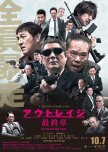
Outrage: Final Chapter
4 oamenii au considerat această recenzie utilă
"Your attitude determines whether you are poison or antidote"
Outrage Coda brought Beat Takeshi’s Outrage trilogy to a fitting finale. Old school yakuza Otomo had been through a lot in the last two films, but he wasn’t through with the Sanno and Hanabishi families. If they’d left him alone, he might have been willing to let bygones be bygones. Too bad the younger yakuza weren’t smart enough to respect their elders, especially when their elder was a no-nonsense killing machine.After the incidents at the end of the previous film, Otomo took powerful fixer Chang up on a job offer and became the boss of his Jeju Island casinos and hotels in South Korea. Otomo and his underling Ichikawa spent their afternoons fishing and hanging out, that is until a Hanabishi yakuza named Hanada showed up. The cocky gangster had unusual sexual proclivities and hurt two of Otomo’s prostitutes, disrespected him, and killed one of his men. The Hanabishi family’s new head was a businessman who mishandled the whole affair with Otomo’s boss, Chang. Nomura, the new boss, was a businessman who’d never been to prison and had no tattoos and lacked the respect of the older executives. He attempted to have Chang murdered as well as ordering Nakata to murder his sworn brother, Nishino. Otomo never needed much of an excuse to go on a murderous rampage and rampage he did, taking revenge on anyone left who wronged him in the last two films and the current one. He made the Valentine’s Day Massacre look like a Sunday school picnic. Retribution thy name is Otomo or “F*ck Off”, whichever you prefer.
The original movie was wall to wall betrayals, torture sessions, and gruesome murders. The second film took the time to develop relationships and explain the treacherous maneuvering. This last film focused on the old guard having had enough of the lack of respect for the code by the younger upstarts. Much of this film focused on Nakata and Nishino’s strategizing in order to stay alive and remove obstacles to their power. This time instead of being everyone’s pawn, Otomo made his list, checked it twice and erased anyone on it. Despite the high body count, it felt lighter in tone than the others. Coda had more humor than the previous two, dark as it was.
Otomo kept to the code until the very end, showing he was a badass who never blinked in the face of death. He and the Habanishi brothers demonstrated why you’d best not underestimate old guys, there’s a reason they were still around in a job where most employees were given the early retirement plan paid out in lead. Outrage Coda wrapped up the trilogy in the only way a yakuza film could be, in blood.
17 February 2024
Considerați utilă această recenzie?
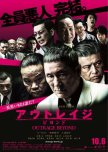
"What are you packing? A toy gun?"
Outrage Beyond is the second in the Outrage trilogy featuring director Beat Takeshi as the ominous yakuza Otomo. In this installment Detective Kataoka is called in to use his connections with the different families to diffuse the Sanno family’s power after they assassinate a police officer.When the Sanno family kills a cop and begins pulling the strings of different politicians, Detective Kataoka goes to work whispering into the ears of disgruntled executives in the Sanno family. The new Sanno head has been ignoring the seniority system and pinching pennies while filling his own coffers. The rival Hanabishi family is reluctant to start a war even with the rumor that Kato killed his previous boss in order to be promoted. Kataoka pulls out his hidden ace when he has former yakuza boss, Otomo, paroled early from prison. So far everyone had been fairly civil in their expensive suits, but made the mistake of going on the offensive with Otomo. It’s all fun and games until someone pulls out the power tools for a good old fashioned gang interrogation.
This film was more about chess moves than gang violence. Like politics, yakuza alliances make strange bed fellows. Both friends and enemies alike betrayed each other. That’s not to say in the final third of the movie that the bodies didn’t start piling up, because they did. As the families went to war, the police sat back and watched. The acting was fairly average for a crime film. Kohinata Fumiyo made for a smarmy and conniving cop who was a little too close to the families. Matsushige Yutaka, Midnight Diner’s hot dog loving yakuza, played the straight laced cop appalled by Kataoka’s deadly methods. Beat Takeshi gave Otomo a world weariness for the yakuza with principles and who was also handy with a power drill. The plot while predictable was interesting though it did tend to drag when the negotiations and puffed chest scenes went on too long.
Outrage Beyond brought plenty of double-crosses, satisfying comeuppances, and even finger mutilation. The big moral of the story is if you want to keep your job as the head of the family, don’t cheap out and not provide a meal for your officers, a well fed exec is a less deadly exec. If you enjoy gangster movies and don’t mind more talking than usual in your crime families, Outrage Beyond is one to give a try.
16 February 2024
Considerați utilă această recenzie?
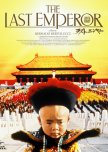
The Last Emperor
4 oamenii au considerat această recenzie utilă
"You are responsible for what you do"
The Last Emperor was epic in scope with filming for the first time in the Forbidden City, stunning costumes, and an enormous cast. It covered sixty years of Chinese history largely through the eyes of one man…the last emperor of China.The film bounced back and forth in Emperor Pu Yi’s life in chronological order from his coronation at the age of 3 with his future life as a prisoner of the PRC. From the time he ascended the throne he was told he could do anything, anything that was except leave the Forbidden City. All of his needs were taken care of with the exception of having no friends, his company primarily old eunuchs. As he aged, he was given a Scottish tutor named Reginald Johnston with whom he became close. While safely ensconced behind the city’s walls, different factions gained and lost power outside. Instead of escaping those walls, he escaped into marriage with his Empress and concubine.
After the Beijing Coup in 1924 he bid a final farewell to The Forbidden City and was sent to Tientsin where he lived a hedonistic lifestyle. The Japanese army convinced him and/or coerced him into becoming the emperor of Manchukuo, previously Manchuria and Pu Yi’s ancestral home. Instead of finally becoming the ruler he had dreamed of being, he found himself a puppet of the Japanese. Things went from bad to worse there when the Japanese lost WWII and were looking for the exit door. Pu Yi was captured by the Russians and later turned over to the PRC where he was imprisoned for ten years in order to be “re-educated”.
As glorious as the sets, scenery, and costumes were, Pu Yi wasn’t always the most fascinating character. He went from being a figurehead to a puppet to a prisoner. He had no say in the government and often led an insular life. Dramatic events in China and globally impacted him on the periphery but politically speaking he was as impotent as his eunuchs had been. Prison gave him new insights into himself, others, and the war. A person who had his share of damaging tantrums, he had to learn to grow up. He’d never put toothpaste on his toothbrush or learned how to tie his shoes, soon he had to also learn to pee correctly and to garden. While imprisoned Pu Yi was shown a WWII film demonstrating how the people had suffered and the terrible atrocities committed. After the reality check his reformation and realization began to take hold.
I wish Italian director Bernardo Bertolucci had briefly explained some of the political upheavals better instead of just showing another set of beige uniforms in charge. The cinematography was good and maybe it was because they were trying to show a more realistic view of the places Pu Yi lived in or perhaps it was mood lighting, but many scenes seemed abysmally dark. The version I watched had most of the dialogue in English with some Japanese in a few scenes which was disappointing. I would have much preferred for the dialogue that was supposed to be Chinese dubbed in Mandarin. The Last Emperor’s greatest achievement was not the long glossed over historical events covering six decades, for many in 1987 it was the first look into the magnificent 9,999 room palace and UNESCO World Heritage Site.
Joan Chen’s performance as Wan Rong plumbed emotional depths as the Empress became more isolated and dependent on opium. John Lone did his best with Pu Yi, but the character was one I felt little sympathy toward. The wars and tragedies never really touched him except for preventing him from being sole ruler over China. The late Peter O’Toole showed up in the role of Pu Yi’s tutor adding some gravitas to the cast.
The film didn’t touch on the cost to Pu Yi’s people during all of the political upheavals. Even during the various battles and revolutions he ate and dressed well, always had whatever he wanted while many of his people struggled for safety and daily needs. The film ended with Mao’s rule and cult of personality. Despite eliminating the imperial court, they traded one Emperor for another of sorts.
13 February 2024
Considerați utilă această recenzie?

"Do you want to stay in the darkness forever?"
Huang Bo wrote, directed, and starred in The Island. A hapless worker sets off on a business retreat that goes terribly wrong when a meteor hurtles toward Earth on the same day his luck with the lottery changes.Ma Jin and his cousin, Xiao Xing join the rest of the office and their boss on a water bus cruise for a team building exercise. Ma Jin has a crush on the beautiful and elusive Shan Shan who is also on the trip. Fate brought together a meteor and a winning lottery ticket, both of which will not only change Ma Jin’s life, but everyone on the bus as well. After plunging through a ginormous wave that hurls them far from home, the bus lands on a deserted island. The group discovers themselves cut off from the “real” world and completely dependent on each other for survival. A new social hierarchy takes place when they vote on a leader.
I was afraid The Island would be another version of Lord of the Flies. While it did show how society breaks down when people are desperate for food and shelter, it didn’t devolve into a murderous melee. Four different people wore the crown at different times and all four succumbed to the allure of leadership. The first dictator led through intimidation and punishment with his mighty shushing stick. The 2nd claimed to be a leader of thinking and bartering but was a liar and cruel capitalist. The 3rd brought two factions together and gave the group hope, but also slid down the slippery slope of popularity and success which led him to lose track of his moral compass. The 4th leader was a man who finally had power after too long being invisible and it broke him.
“Since all the past is gone, life can start over again.”
Ma Jin held to his lottery ticket like a life line, willing to do anything to stay alive and return home and collect his money. A divine coincidence occurred that caused him to be reborn at the time of his deepest despair. The stranded group had to come to terms with what was Real. Real living? Real hope? And Real land? Money became irrelevant in their society. Believing the world to be mostly underwater, they had to eventually rise above their selfishness and work together for survival and harmonious living. Characters learned to trust and love in their microcosm. Ma Jin even found his confidence that had long been missing.
Huang Bo gave a solid performance as Ma Jin, a character who evolved throughout the film. The gorgeous Shu Qi as Shan Shan was not given enough to do other than look beautiful amongst the bedraggled shipwreck survivors. Lay Zhang as the friend and often perplexed Xiao Xing showed his character’s loss of himself quite well.
The Island remained compelling though it did drag in places. The dark comedy took its characters to the ledge of cruelty and madness but decided to err on the side of hope and love. What it did well was to show how the castaways reacted to the stresses of survival and what it revealed in themselves and how a community can thrive when the people set aside their greed and need to dominate if only for short periods of time. Most importantly, it proved that even on a desolate island, there’s always time for a choreographed dance sequence.
12 February 2024
Considerați utilă această recenzie?

"Memory, time, and Camembert cheese"
Walang KaParis followed the ups and downs of an artist in Paris. The tropes were strong with this one and the foreshadowing let you know exactly where the story was going if you’ve ever watched a romantic movie before. Still, the actors were likeable enough to enjoy their romance in the City of Lights.JoJo makes his living as a street artist and mime. His unique catch as a painter was to do his work in coffee. He’s haunted by his old paintings of a woman he doesn’t remember. How can he have a heart to share if he can’t remember the one who owns it? One day, a woman named Mary comes up to him and tells him she is the woman in the paintings which he doesn’t believe. She pushes hard for a romance to begin with a reluctant JoJo and for a while it does. Then the real story emerges which is bittersweet. Time would tell if they were fated or destined.
Walang KaParis covered nine years and two continents. Within five minutes I’d figured out the familiar plot. As with other genres, execution is key. This film didn’t add anything new, but the actors had a comfortable rapport with each other, though not sizzling. Each took turns chasing the other and as the song said, “And even if the time doesn’t come that you learn to love me back, just don’t stop me from loving you.”
If you are looking for an easy, cheesy romantic film to watch, you could do worse than Walang KaParis.
8 February 2024
Considerați utilă această recenzie?
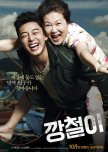
Three coincidences equals Fate or lazy writing
Tough as Iron with Yoo Ah In was a film with an identity crisis. At its heart it was a movie that seemed inspired by Gilbert Grape right down to the opening scene. To make it more exciting they threw in gangsters and the Yakuza. Then for good measure they wedged in a love story. Sometimes too much is too much.According to the synopsis Gang Cheol was a legendary street fighter. Maybe it was Sesame Street? The fight scenes weren't very well choreographed and his most powerful skill was a killer stare. Cheol's life entailed a job working on the docks and caring for his mother. His mom often accompanied him so that she wouldn’t wander off, which she still managed to do quite often. Not only did she have dementia, she was a diabetic with kidney failure. Cheol went to great lengths trying to find a way for her to receive a transplant. Cheol’s buddy, Jong Soo, wanted to be somebody and get rich so he joined a gang with a sashimi loving boss with a hotheaded brother. Of course, the trouble magnet entangled Cheol with his criminal co-workers. In moments when he wasn’t dealing with his mother, his troublesome friend, working, trying to find 100,000 won for his mom's surgery, or dealing with the gangsters, Cheol ran into a pretty photographer visiting Busan which meant it had to be fate.
The gangster angle was weak and took away from the relevant story of Cheol and his mother. Maybe the writers felt that Gilbert Grape would have been more interesting if he’d gotten mixed up with gangsters instead of planning a birthday party. The romance in this film wasn’t a lifeline or an insight into a better life, it seemed more like vacant window dressing. Yoo Ah In and Kim Hae Sook had wonderful chemistry together. There was more than enough story to tell as they navigated the stage in life when the child becomes the parent with little time for himself. This story could have used a romantic involvement to show him what he was missing. But Tough As Iron’s incoherent gangster escapades pulled too much focus from the heart of the film leaving no room for a well-developed love story.
Tough as Iron had the potential to be a powerful and meaningful film, especially with the caliber of actors involved. I thoroughly enjoyed watching the interplay between Cheol and his mother, the good days, the bad days, the exhaustion, heartache, and love. I found their relationship much more fascinating than a maniacal killer who stuttered.
5 February 2024
Considerați utilă această recenzie?

Han Soo Han rescues a kidnapped heiress about to take control of her deceased daddy’s company. The requisite evil employee with a manic laugh played by a bargain basement Jang Hyuk wannabe had her kidnapped to force her into signing over her shares of the company. HSH works for a loan shark often helping the people he shakes down for money, thus making him a good guy. He lets Choi Ye Jin stay at his place until it’s safe for her to return home. Before they can have any lingering sexy glances or heartfelt conversations, all sorts of people show up at his doorstep for nefarious reasons.
The plot sounded like an action romance and maybe it was supposed to be, but the acting wouldn’t lead you to believe it. There was no chemistry between the two actors. Kang Seok Chul’s expression stayed locked into place through the whole movie. Yoo Ye Bin was always staring off into space either thinking deep thoughts or wondering if she should try the new Thai restaurant down the street. The filmmakers saved money by not giving Choi Ye Jin any backstory or personality but splurged on blurry shaky flashbacks for HSH’s tragic man pain backstory. Han Soo Han decided to rescue her at one point, not because they shared “a moment”, unless that was what the one staring contest was about, more probable it was just because he was a good guy. Whatever the reason he wasn’t very effectual because she ended up kidnapped---again.
If the fights had been entertaining, I could have forgiven the bland acting and plots holes large enough for The White Truck of Doom to pass through but the fight choreography was also bland. Han Soo Han threw numerous haymakers which are a sure sign of someone who doesn’t know how to fight. Sure, if they connect they might hurt, but the experienced fighters he was up against should have pounded him into the ground by the time his fist arrived from Busan.
Unless you’ve never watched any sort of crime film or drama, there will be no surprises, not even one “shocking” betrayal and a “shocking” murder. The best thing about this film was the 80 minute running time which felt overly long near the end.
31 January 2024
Considerați utilă această recenzie?
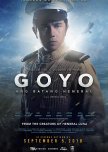
Goyo: The Young General
4 oamenii au considerat această recenzie utilă
"Why do we always look up and glorify without questions?"
Goyo: The Boy General picked up soon after General Luna was assassinated in the prior film “Heneral Luna”. General Gregorio del Pilar and President Aguinaldo faced another colonizer when the Spanish ceded The Philippines to the Americans. Much of the story took place in Pangasinan during the five months in 1899 when Goyo was stationed there until the fateful battle in the Tirad Pass. I’m always leery of writing a review about another country’s history and revered leaders so this will only be my opinion on the artistic merits of the film.“And what did the Republic do during those five months when its doom was being plotted?”
Over an hour of the film took place when the American forces were quiet and Goyo and his men were hanging out in Pangasinan. Instead of strategizing or training, Goyo spent most of his time trying to romance the lovely and distant Remedios. It scarcely felt like war was looming as there were parades, plays, feasting, and dancing going on much of the time. The people hailed Goyo as a hero due to his past successes against the Spanish. Not everyone loved him for there were those who blamed him and Emilio Aguinaldo for the death of General Luna. Other generals resented his arrogant attitude and Aguinaldo’s favoritism.
“Why are we blindly dependent on heroes?”
The movie didn’t set up any hero worship of Goyo. Using artistic interpretation, The Eagle as he was also known, occasionally had bloody visions from the past and blood-soaked fears for the future along with trembling hands. His military abilities were also sorely tested against the new foe. In one short skirmish with the Americans, sharpshooters picked off his men at an alarming rate causing him to retreat. He was shown on two separate occasions not recognizing gun or cannon fire leaving his people vulnerable. And much of the movie focused on his womanizing. The half of the movie with skinny dipping, women fighting over him, and hero worshipping began to wear thin.
“We don’t need heroes, we need soldiers”
The narration from historical letters showed how ill-prepared they were for war. Most of the soldiers were farmers or laborers. When the Americans advanced, they did so speedily, catching Goyo flat-footed. Lacking in supplies the military and Aguinaldo’s family traveled with little to eat or drink with the Americans hot on their trail. At Tirad Pass, Goyo and his men held the high ground but were unable to capitalize on it for long. Vastly outmanned and outgunned they were quickly overrun yet still able to give President Aguinaldo and the rest of the army time to escape.
The cinematography captured the time and beauty of the country even during the midst of war. The soundtrack elevated the emotional mood of each scene. Actors varied in strength and ability. One thing that stood out was for both countries, many of the soldiers were quite young. The sound could fade in certain scenes making dialogue garbled. But overall, the production values were quite high. The battle at Tirad Pass was especially well shot and choreographed. It’s one of the better Filipino films I’ve watched.
“Self-preservation is the law of God”
The message of the film could be blurred. Much of the film was devoted to Goyo attempting to romance the reluctant Remedio even when his ex-lover strolled into town. It didn’t help his cause that his briefcase was filled with love letters from pining women he’d abandoned. Was it a tragic romance or simply a criticism of the young general? Though the people loved their country and wanted autonomy, the military and Goyo were rarely shown in a positive light. There was no shortage of criticism for del Pilar, Aguinaldo, divisive generals, soldiers who ran away in fear, villagers who refused to help, and those who profited off the Americans. Aguinaldo was especially the target of much ire. Numerous bloody visions hinted that Goyo might not have been emotionally stable. Guilt or simply PTSD for a young man who had seen too much and carried a great burden on his shoulders?
“I’m beginning to believe they are right to call us children”
The narration frequently mentioned that the Filipinos were like children. Lack of solidarity and supplies, military leaders unskilled in strategic thinking, and political self-interest doomed the revolutionaries from the start. Their fight for independence soon became a fight for dignity. Despite the often negative portrayal of the military leaders, many courageous revolutionaries were prepared to die fighting for love of their country and did. It would take another 45 years for their dreams and sacrifices to blossom.
23 January 2024
Considerați utilă această recenzie?
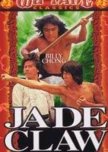
"Tired? Too bad!"
Billy Chong teamed up with Simon Yuen in a thinly disguised Drunken Master/Snake in the Eagle's Shadow copy though lacking the drinking. This time the chosen styles were Shadow Eagle's Claw vs the Double Phoenix Eyes! No secret books or lists, just good old-fashioned revenge for a father's murder.His name was Ah Wen, they killed his father, and they would have several years to prepare to die! Ah Wen knew no kung fu and agreed to work at a dubious kung fu school in exchange for being taught. This male Cinderella never had time to learn kung fu because he was relegated to the never-ending chores in the kitchen. Luckily for him, Chang King Sang, the cook, was secretly a kung fu master who was in hiding from a gang of bad guys. After many “hilarious” encounters, Chang agrees to train Ah Wen. Ah Wen is confronted by the baddies, beaten and questioned, and let loose so that there could be another training montage.
Crystal Fist aka Jade Claw had a paper and worn thin plot. The humor was just as gaunt despite repeated tries to emulate Jackie Chan’s early movies. The strength of the film lie in the training montages and the fights. Three Yuens-Corey, Brandy, and Shun Yi along with Chin Yuet Sang choreographed the fights. The comic relief baddies played by Addy Sung and Brandy Yuen had a cool trick move when they teamed up. Some of the fights and training montages were better than others. The finale when Billy brought his fists to a sword fight was creative. Billy Chong only made around ten kung fu movies in the Golden Age but I always enjoy watching him fight. He was quick and agile and never kept his shirt on for long. Where the movie faltered was in the villain department. Chu Tit Wo was not a formidable or memorable bad guy. Chan’s movies in the same vein had charismatic and high kicking Hwang Jang Lee to bring a proper menace for the good guy to be pitted against. Simon Yuen wore the same scruffy wig and basically played the same character as he did in the other two movies. The wig helped camouflage the stuntman for the more complex and acrobatic moves. I don’t usually compare movies, but when moviemakers go out of their way to copy someone else, it’s going to happen.
Billy Chong brought his mischievous smile and quick moves to play against Simon Yuen’s wise, playful, gray wigged master. Even if his character was a retread from other films, I’m happy after 300+ movies of often being relegated to playing bit parts that the Yuen patriarch finally had a signature role to call his own before his untimely passing one year after this movie came out. Crystal Fist wasn’t a great or even classic kung fu flick but it did have entertaining moments.
2 Jan 2024
Considerați utilă această recenzie?

Această recenzie poate conține spoilere
Emotionally effecting
Still was a quietly melodic short film following the lives of twin brothers, Andres and Gael. It showed how children can find joy, peace, and comfort in the smallest of gestures and activities even when confronted with unkindness.Andres and Gael are twin brothers who are tactile and nearly inseparable as they explore the world around them. I could see the constant push-pull in these boys. Separate identities yet close and nearly always together. Despite cruel words from a father and friend, the boys bond remained unbroken. The brothers’ love for each other was great enough to let each one be who they truly were without judgement.
Hilom/Still was short on dialogue and time yet still packed an emotional punch of childhood nostalgia, tenderness, and brotherly resiliency in the loss of trust in those around them.
28 Dec 2023
Considerați utilă această recenzie?
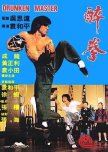
Această recenzie poate conține spoilere
Drunken style vs Thunderleg!
Drunken Master reunited Jackie Chan with much of the cast and crew from Snake in the Eagle’s Shadow from March of the same year. This time Chan played a mischievous Wong Fei Hung who much against his will was forced to be the student of Drunken Master Beggar So/Sam Seed. He was finally motivated to improve his skills and become serious with his training when confronted by Hwang Jang Lee’s Thunderleg!Wong Fei Hung seems to make or find trouble wherever he goes. His exasperated father calls upon Uncle So to train or break the young man before he causes trouble he and the family cannot get out of. At first WFH doesn’t take the training too seriously until he is humiliated by the deadly Thunderleg who considers him unworthy of killing. The requisite training scenes follow along with a couple of test fights before he’s finally able to face Thunderleg in the grand finale.
The beginning of the film dragged with Uncle So only showing up around the 45-minute mark. That’s not to say there weren’t entertaining fights in that time. Chan had a memorable fight with Tino Wong in the market place and then later against his toady in the Wong school. The real highlight was when Wong put the moves on a girl in town and her mom schooled him in kung fu and manners. Linda Lin Ying was a delight to watch sparring with Chan. There were a couple of “comic” scenes and fight scenes that didn’t serve much of a purpose though. The story kicked into gear when Uncle So arrived and showed Wong his weaknesses. A 66-year-old Simon Yuen really found his hallmark role with the drunken master. Still nimble and energetic he held his own against the kung fu clown. Hwang Jang Lee’s Thunderleg was properly menacing and he showed why he was the most feared kicker in Hong Kong. At least he didn’t accidentally kick out one of Chan’s teeth like he did in the previous film!
The best part about movies like this was that there was almost no wire-fu. Utilizing wide angles and long takes you could watch people who actually knew how to do the moves and weren’t faking it with lots of editing and closeups. There was also no kung fu posing. The moves were relatively fast and fluid with each fight showcasing different skills. Yuen Woo Ping and Hsu Hsia provided the fight choreography. Hsu made an appearance as the King of Sticks fighting both Yuen and Chan with, what else, a long stick.
This was not a movie with much plot, not even a secret book or list and nary a rebel to be found. Most people, including myself, don’t worry about the plot much as long as the fights were entertaining and Drunken Master succeeded in that goal. They were well choreographed and shot. Although it had comedic moments it wasn’t over the top slapstick as some kung fu comedies could be. I liked this movie quite a bit better than Snake in the Eagle’s Shadow. While Wong Fei Hung could be cocky and annoying at times, he also faced consequences for his actions propelling him slowly but surely into being a better fighter and human being. Drunken Master ran a little long but the inventive fight sequences by compelling characters more than made up for it.
11/20/23
Considerați utilă această recenzie?

Această recenzie poate conține spoilere
"At the Louvre I saw the Black"
Kishibe Rohan takes his supernatural ability to read people like a book on the road to Paris. At the Louvre he will confront a relentless evil residing in a hidden painting. The story jumps back and forth in time with much of the story told in the past. Fair warning: If you have arachnophobia you will want to avoid this film at all costs.Rohan is working on a new manga and after remembering a story about the blackest of blacks, so black it doesn’t reflect light and is in essence invisible, decides to hunt a painting down that uses the rare pigment. Death and spiders follow the path that takes him to an auction for a painting and then to the Louvre in search of the original.
The cinematography ranged from gauzy and ethereal, to elegant, to dark and foreboding. Discordant notes and chords accompanied the creepier facets of the film. The supernatural elements of Rohan’s gift and the cursed painting were well done, especially for someone who has neither read the manga nor watched the drama.
Takahashi Issei can always be counted on to give a layered performance even when wearing a headband designed for a manga character. He actually played two characters, giving them both separate personalities ranging from light to absolute darkness. Marie Iitoyo as Rohan’s editor seemed out of place with her childlike acting. Kimura Fumino matched the mood of the film as the haunted Nanase. The Louvre could almost be counted as a cast member with its lovely exhibits, own complex history, and gloomy, forgotten vaults.
The film felt like it might have been better served as a two-episode drama due to all of the backstories which took up a substantial amount of time. Both of the trips to the past felt overly long. Not having the compelling Issei on the screen also took away from the forward momentum of the story. Overall, it was a strange, creepy (crawly!) movie that did manage to integrate the past and the present connections to the sinister painting lurking in the shadowy corners of the Louvre.
10/25/23
Considerați utilă această recenzie?

The Water Monster
4 oamenii au considerat această recenzie utilă
Această recenzie poate conține spoilere
"The fear of men makes them the perfect prey of the devil"
Water Monster was a taut 78-minute monster thriller with very little filler. No slapstick comedy, no overwhelming CGI, just a fishing village trying to find a way to survive a lethal water monster attack.Shui Sheng witnessed the Water Monkey killing his father a decade before. Now the creature is back and Uncle San, the village elder, declares they must once again sacrifice a virgin to save the village. After the death of her father and brother, Xiang Lan is willing to die, but her love interest, Shui, is not going to let that happen. He gathers a small force to face the village and the monster which at this time is difficult to differentiate between. Shui saves Xiang Lan. Then the heroes confront the Water Monkey and after a fierce, deadly battle cage it. Uncle San refuses to let them kill it thinking the creature to be a god. With that fateful mistake the village suffers even greater losses and must now confront not only the Water Monkey, but their fears and mistakes of the past.
Water Monster went where few guys in rubber suits movies dare to go. The body count of familiar characters was extremely high. Old beliefs were faced head on. Shui Sheng dared to call the village elder’s self-protective action as murder. Anytime someone in a movie says, “Please don’t blame us,” nothing good or righteous follows. Why is the guy who decrees someone must be sacrificed never volunteers himself? In a world where women are devalued, why not sacrifice a virgin male or the village chief as a more valuable “gift”? Chief Liu’s eyes were finally opened and he realized that “begging, sacrifice, and wishful thinking” only strengthened the monster and weakened them. It was time to unite and face death.
The atmosphere was perfectly dark and foreboding. The music and some of the lighting were reminiscent of Pirates of the Caribbean. Every time the familiar “bong pulse” rang out I wondered who had a piece of the Aztec gold. The monster costume looked like an updated version of the Creature from the Black Lagoon (1954), a movie that gave me nightmares when I watched it on the late, late-night show on tv at a childhood slumber party. The Water Monkey really would have given me nightmares as he was fast, extremely flexible and possibly a kung fu master. The fights were fierce, bloody, and deadly. An abundance of inventive weapons were created to stop the seemingly invincible foe.
The Water Monster kept the action coming at a thrilling pace. I was invested in several of the characters despite the limited amount of time devoted to them in this short movie. The village not only had to face the vicious monster, but also their fears and responsibility for their own safety. For what looked like a low budget horror movie, these still waters ran deep.
10/24/23
Considerați utilă această recenzie?

Această recenzie poate conține spoilere
Here there be monsters!
Monster Hunter was not a great movie, but it was a fun popcorn movie. For the ‘based on a video game’ genre it gave no more than the bare minimum---thin plot, adequate acting, lots of action and dangerous monsters. If a movie is going to scrimp on the script, it had better bring good CGI action and that is the one thing this movie got right.The Hunter (Tony Jaa!) fell off his desert ship when it was attacked by a Diablos. Meanwhile in another world Capt. Artemis and her security team for the U. N. are in the desert searching for a missing team. An enormous sandstorm complete with powerful lightning transports them to the Hunter’s world where they are almost immediately attacked by a Diablos and later giant spiders. Now we know where Shelob came from! Artemis and The Hunter come to blows and then to a détente as they seek to make their way past all of the dangerous creatures, each wanting to return to their own home. When they finally make it to an oasis, The Admiral catches up with them, and after a misunderstanding, he takes Artemis into his confidence. The ship was headed toward the Sky Tower where an advanced ancient civilization once lived. The portal to her home is there with only one, well mostly one, problem. It’s guarded by a Rathalos, a giant fire-breathing dragon with a nasty temper.
Mila Jovovich of the Resident Evil series is no stranger to action and she made for a believable kick-ass heroine. Tony Jaa wasn’t able to show off his martial arts as much as I would have liked, but he had plenty of opportunities to fight and be heroic. I’ve been a fan of Ron Perlman’s since Beauty and the Beast. He’s made a career off of tough talking, rough fighting roles (Hellboy anyone?) and showed he could still face down a dragon at his age. After adding in Palico, a pirate cat, there was no denying the main characters were an odd lot.
This movie had little plot. Soldiers from one world land in a world where there be monsters. The sole surviving soldier befriends a warrior from the different world where they must work together to survive and destroy the gruesome monsters lurking about. What made the film work, in its own very limited way, more than the actors, were the exceptional CGI creatures. The Diablos, multitude of spiders, and Rathalos were terrifying and convincing.
If you are looking for a cohesive, multi-layered story and character development, better look elsewhere. If you have time to kill and enjoy a badass female lead taking on ginormous creepy critters, you could do worse than Monster Hunter.
10/6/23
Considerați utilă această recenzie?

 54
54 191
191 11
11






















